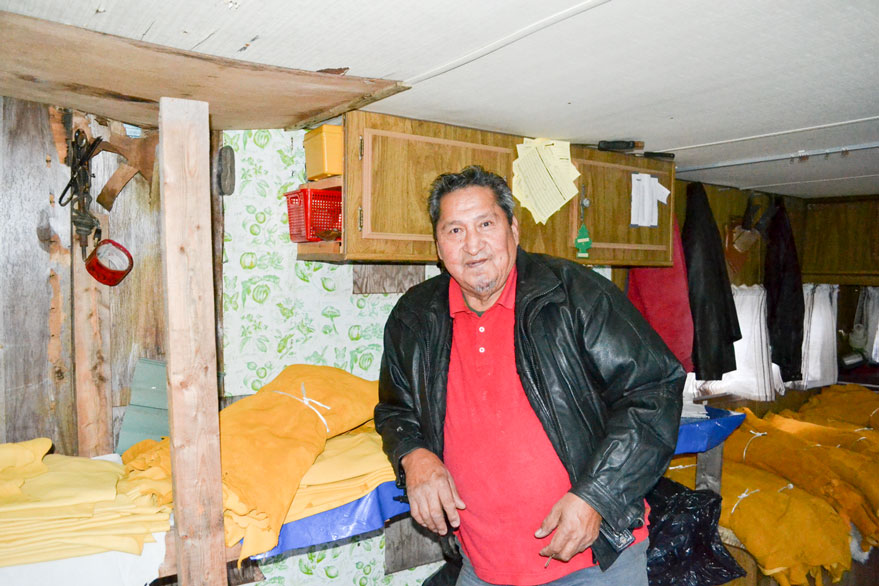M’CHIGEENG—After a couple of years hiatus, hunters will once again be able to exchange their deer or moose hide for a nifty successful hunt hat, thanks to the return of Hats for Hides by Dominic Bebonang of Bebonang Golden Hides.
“I’ll be happy if I can get a couple of hundred hides this season,” said Mr. Bebonang. “I had quite a number of hats left from a couple of years back, so people will be able to get a hat when they turn their hide in.”
Mr. Bebonang said that simply dropping off the hide to his place in M’Chigeeng will be fine. “I usually put out a sheet of plastic in the yard for people to put the hides on,” he said, adding that any additional effort isn’t really required. “Some people would put the hides in their freezer, but you don’t have to do that. Just stretch the hide out with the flesh at the top.”
Some folks cut moose hides into quarters for ease of transportation and that is fine by Mr. Bebonang. “That’s what I do and the tanners seem to appreciate it,” he said. “A moose hide can be pretty heavy.”
“I have lots of plastic,” said Mr. Bebonang. “I got a lot of it from Berry Boats back in the day. It was the plastic that they wrap boats in for the winter and it works fine.” Mr. Bebonang is happy to recycle and reuse the boat wrappings.
Mr. Bebonang first started collecting the hides for tanning 15 to 20 years ago. “Sophie at the Ojibwe Cultural Foundation used to do it, but one year they ran out of money, so I took it on,” he said. Once tanned, the hides would be used by elders to create traditional crafts.
“I worked at the dump for 17 years and that was great because people would bring the hides in and we wouldn’t have to put them in the dump,” he said. Too often hunters simply leave the hides to rot in the bush which Mr. Bebonang said is a terrible waste.
There are fewer and fewer tanneries in operation as the people providing the service get older, noted Mr. Bebonang. “But I have a guy who is still doing it,” he said. “I transport the hides myself.”
The hides offer Mr. Bebonang a modest boost to his pension. “If I can get an extra $10,000 to $15,000 a year, that’s good enough for me,” he said.
Mr. Bebonang salts the hides before stacking them. “A bag of salt is around $15 and I can do around 15 to 20 hides with that,” he said.
Mr. Bebonang said that he believes deer are getting smaller. “The biggest hide I’ve seen was from Barrie Island,” he said, “that one was around 14 square feet.” Most come in much, much smaller these days.
Hides can be dropped off at 805 Spring Bay Road in M’Chigeeng and Mr. Bebonang can be reached at 705-377-4130.





